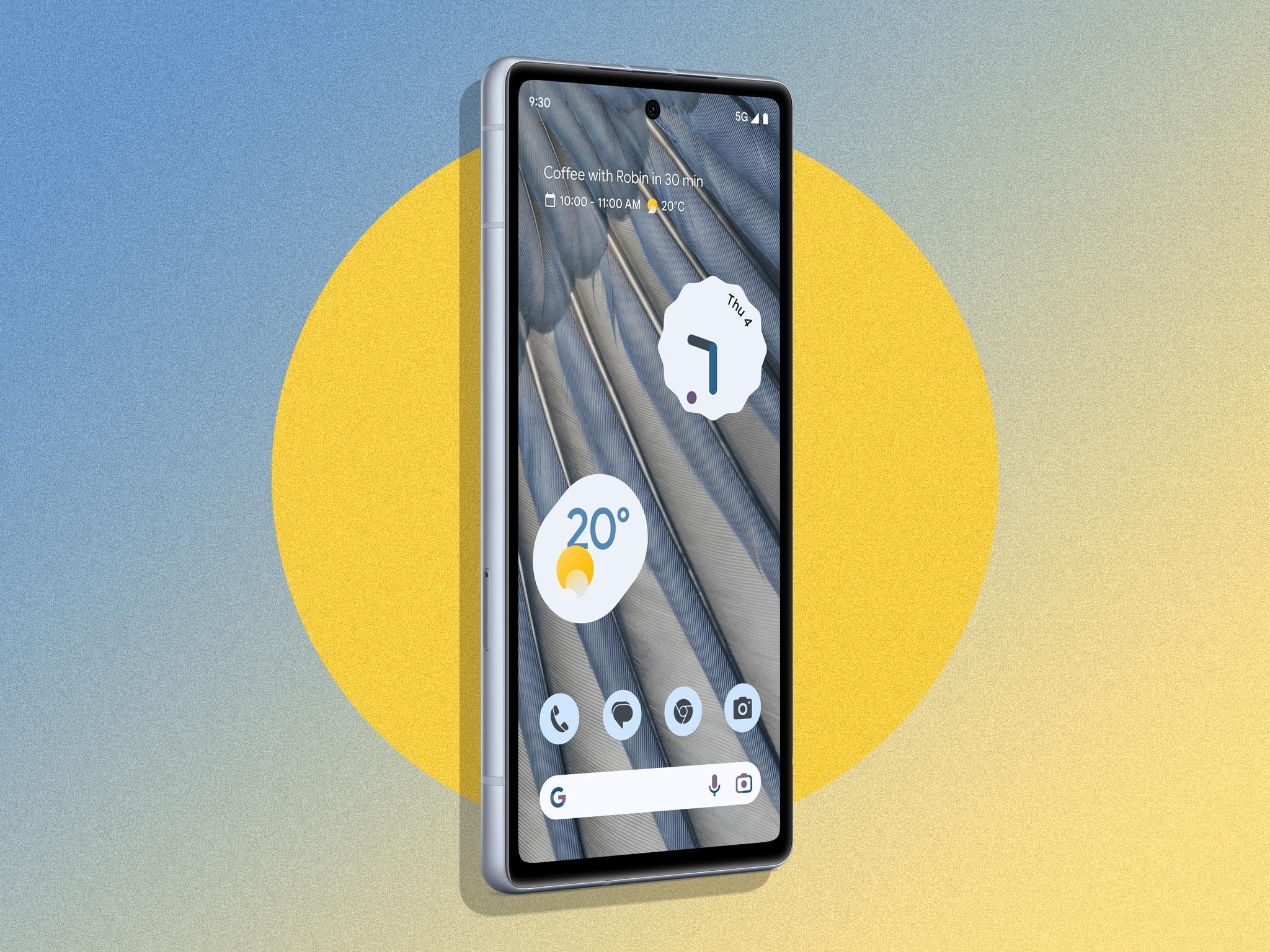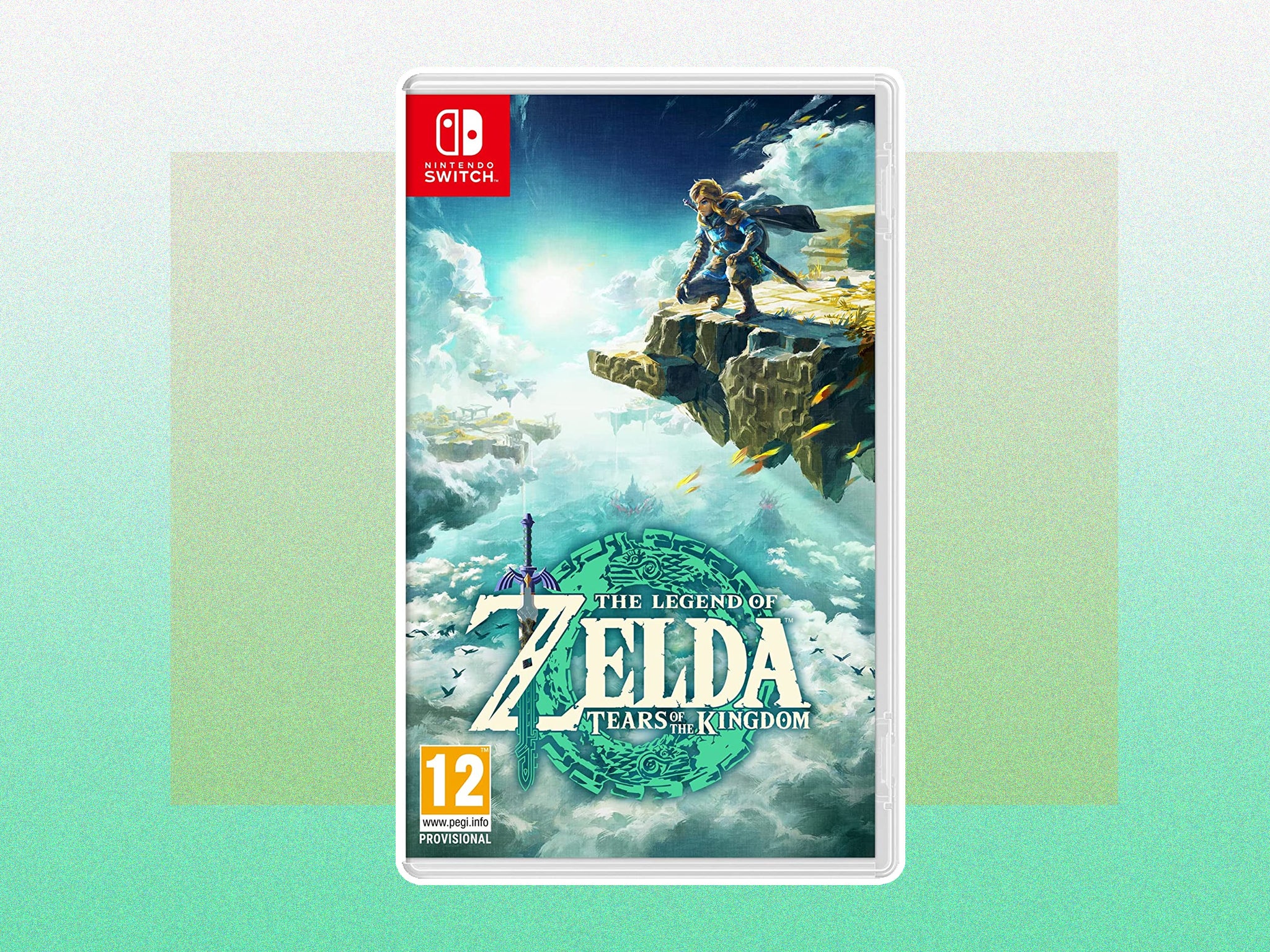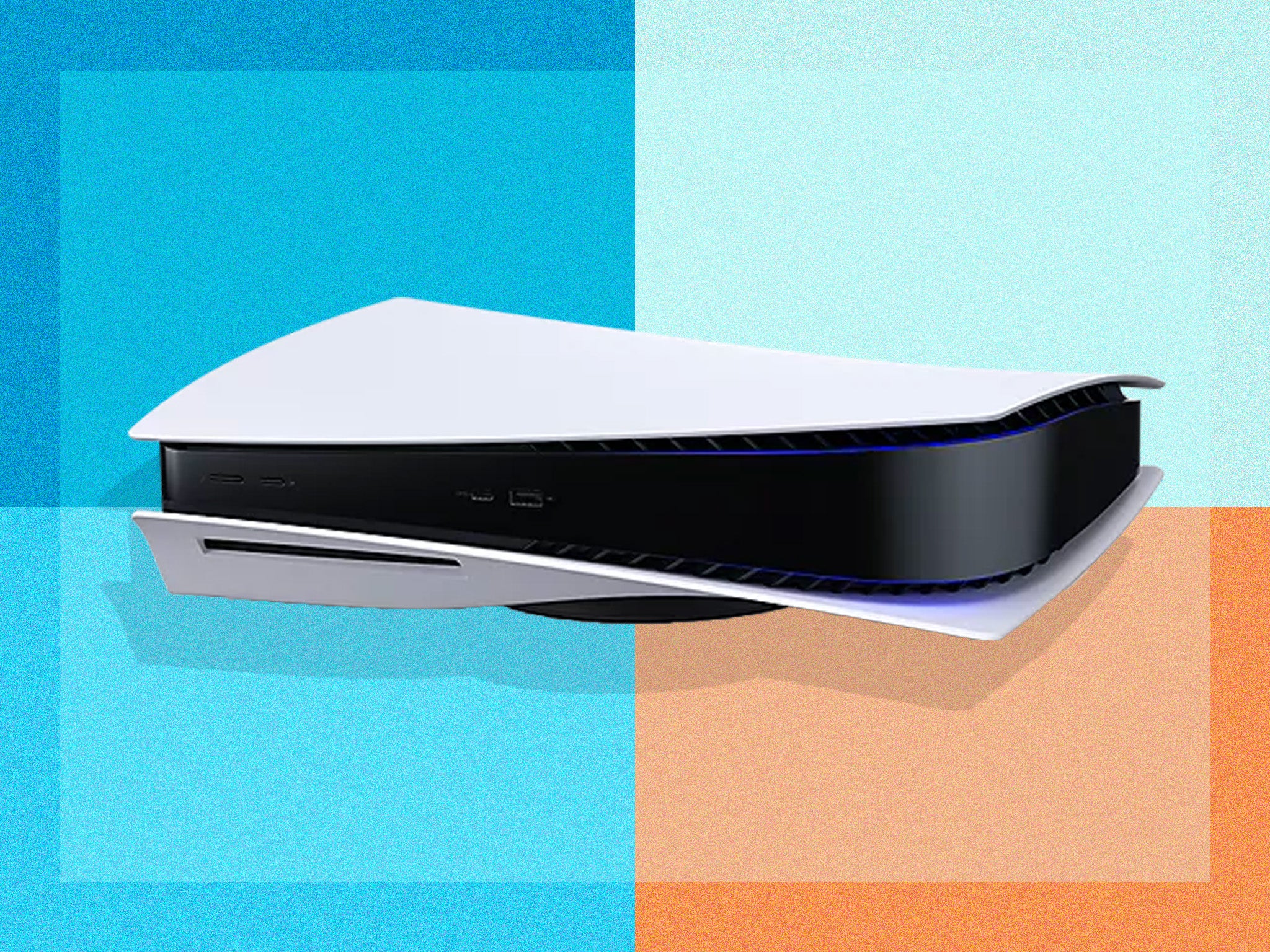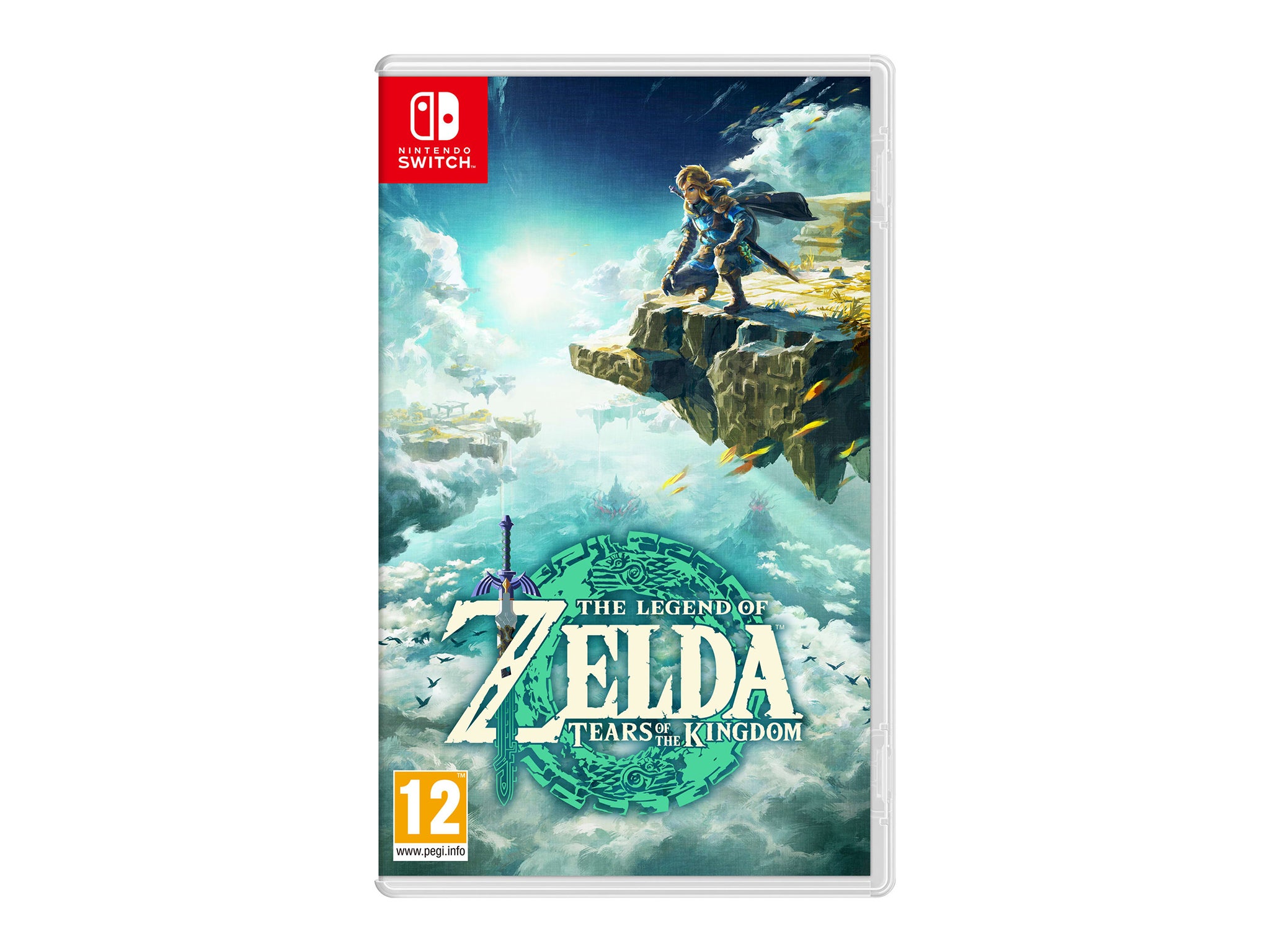
The Independent's journalism is supported by our readers. When you purchase through links on our site, we may earn commission. Why trust us?
The Legend of Zelda: Tears of the Kingdom review
The exceptionally inventive sequel to Breath of the Wild returns to a bigger, better Hyrule
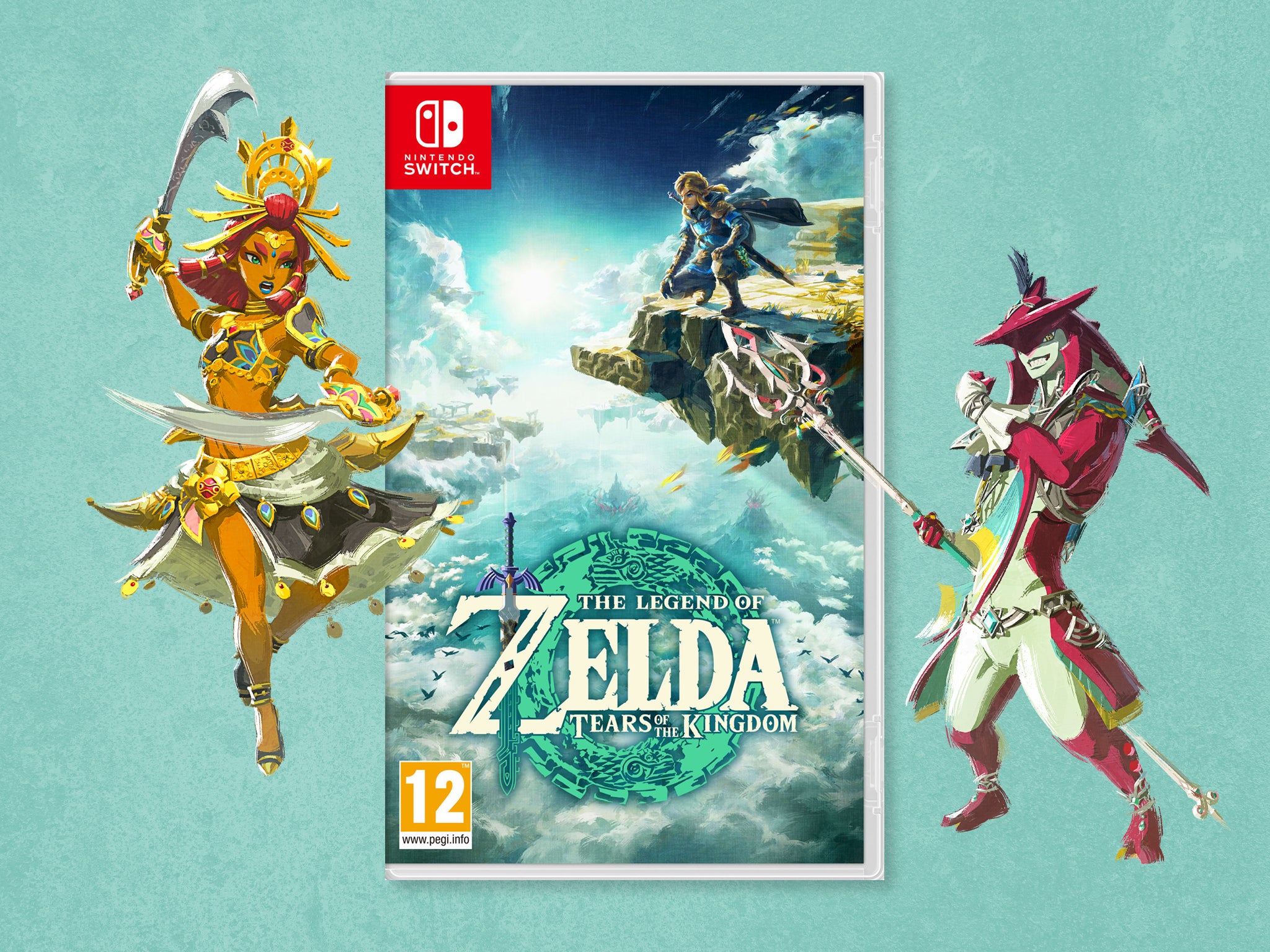
The long-awaited sequel to Nintendo Switch classic Breath of the Wild, The Legend of Zelda: Tears of the Kingdom takes the version of Hyrule we saw in the original game and turns it into a giant physics playground.
Tears of the Kingdom is an open-ended puzzle adventure, part Minecraft, part Garry’s Mod, a bit Crystal Maze, but mostly Scrapheap Challenge. Tellingly, for the first few hours of your adventure, there’s hardly any combat to worry about. Instead, you’re learning your way around Link’s new world-manipulating abilities.
Ultrahand lets you move objects in the world and stick them together. Fuse lets you combine two items in your inventory. Ascend lets you teleport through ceilings. Recall lets you rewind a moving object, sending it back to wherever it came from.
Armed with this set of physics tricks, you are, in effect, a capricious young god cavorting around the remixed and expanded world of Hyrule and bending it to your creative will, constructing simple cars and powered boats and rocket-propelled planes.
Breath of the Wild challenged players to think outside the box when approaching its open-ended puzzles and enemy encampments. Tears of the Kingdom takes the stabilisers off – the game hands you a box of sharp tools, a bunch of Duplo bricks and a bucket of lighter fluid, and leaves the room. For newcomers, this will all be a bit overwhelming.
How we tested
The Legend of Zelda: Tears of the Kingdom was reviewed on the Nintendo Switch OLED ahead of its official launch date of 12 May. Playtesting was in both handheld mode and TV mode. Handheld mode suffers from a few minor performance drops in certain sections of the game, though TV mode offers a smoother, better-looking experience.
‘The Legend of Zelda: Tears of the Kingdom’: £49.99, Currys.co.uk
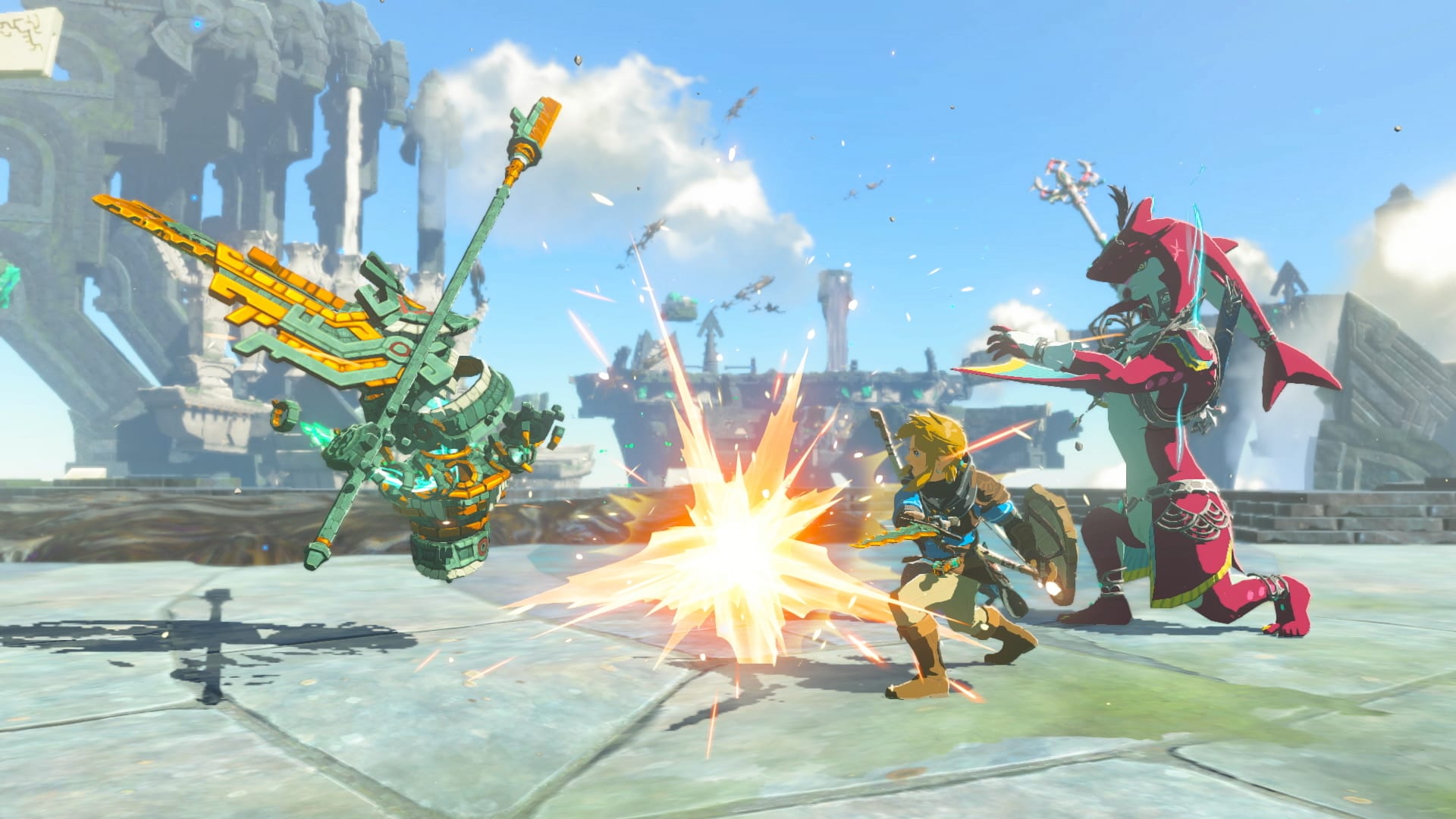
Tears of the Kingdom is laser-targeted at players who’ve exhausted everything Breath of the Wild had to offer, and expands Hyrule to include a Skyward Sword-esque archipelago of floating islands, plus a hardcore underworld sodden with goop and populated by especially challenging monsters.
Upstairs in cloud-town is where you’ll find what remains of the Zonai, an extinct race of lemur-looking dudes, whose fancy technology forms the backbone of all of the game’s puzzling and building. Feed any Zonai mineral fragments you find into their caravan-sized gumball machines and they spit out the various components you need to build your inventions: things such as fans, rockets, wings and wheels.
It takes a while to get to grips with it, but making stuff in Tears of the Kingdom is a remarkably intuitive process. Parts will snap together at certain points and at certain angles, but there’s enough wiggle room that these invisible guiding forces feel helpful rather than restrictive.

Underpinning all of this is a much improved physics simulation, perhaps the best physics simulation in games, one that’s robust enough to give you the confidence to experiment and build weird constructions without worrying they’ll glitch out, fall to pieces or rudely phase into the nearest boulder.
Read more: ‘Horizon Call of the Mountain’ reviewed
Objects in the world behave realistically: wheels roll precisely how they should, blocks have heft and weight, and even very complex physical interactions – such as adding a long beam between a rolling cog and a static one to transfer the rotational force from one to the other – pan out smoothly and believably.
The fuse ability is the other major addition to Tears of the Kingdom. Traditional weapons across Hyrule have all decayed for some hand-wavey plot reasons, meaning swords and axes are essentially now just useless hilts. Fuse a boulder to a sword and you’ll create a much more powerful hammer. Fuse a pair of Bokoblin horns to a stick and you’ll create some kind of horrible spiky spear contraption.
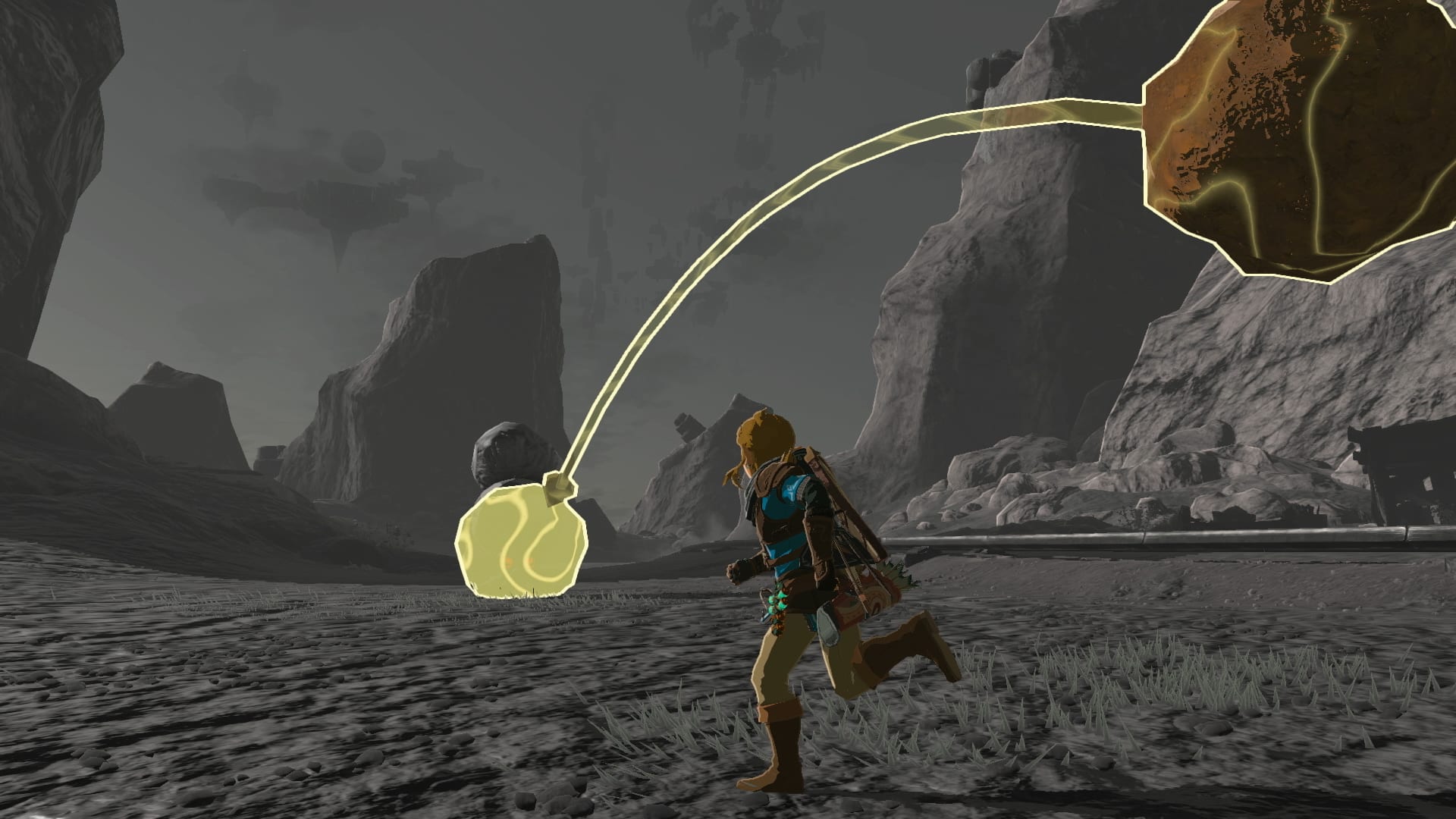
The possible combinations are countless, and the majority of them are not particularly effective but, by experimenting, you’ll start to discover which weapons fuse neatly with which items. There are even special effects, such as elemental damage when you fuse chuchu jelly to a weapon, or the ability to blast enemies with a windy gust by fusing a large piece of wood to the end of a stick to make a giant fan.
Shields can also be modded. Fuse an explosive barrel to your shield and it will explode in the face of the first enemy to attack you. Or fuse the barrel to a weapon and you can simply chuck the entire thing right at them. Individual arrows can be fused too, letting you launch bombs from a distance, light up caves with bioluminescent flowers, or just fire baked apples at your enemies, for no reason other than the unalloyed joy of simply messing about.
Of course, all of this physics sandbox fun is built on top of everything that made the original Breath of the Wild so beloved. An enormous and richly detailed world with a full day-night cycle, a rousing and dynamic orchestral soundtrack that reacts to how you play, complex elemental systems that have you dressing in warm clothes to avoid freezing, an elaborate cooking minigame (now with recipe cards), a skill-based combat system with Dark Souls-ish timed parrying and dodging.
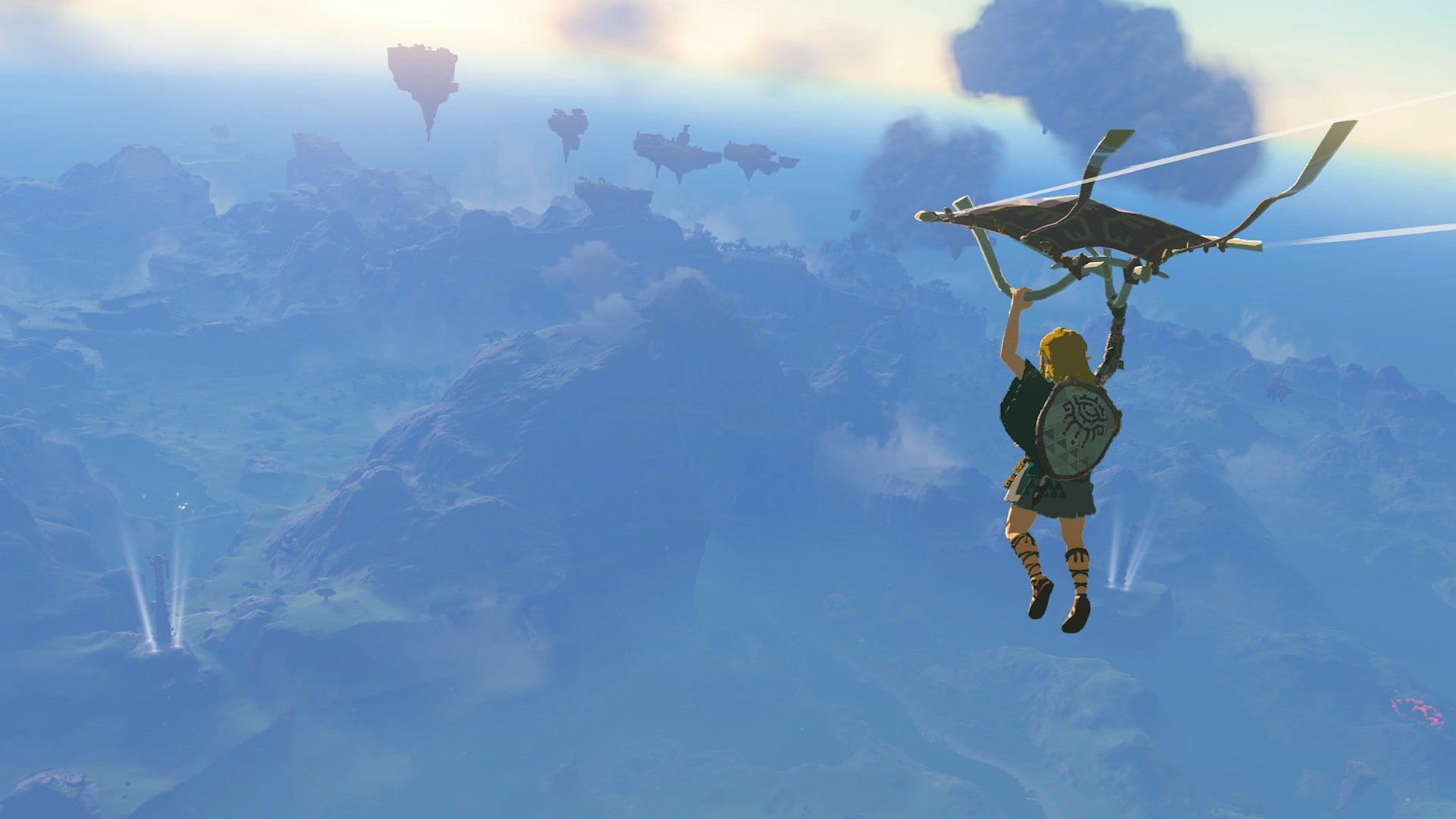
Tears of the Kingdom is a game that rewards lateral thinking, and is cleverly designed to goad you into cheating your way through any situation you don’t like the look of. Even during the earliest sections, enemies are purposefully made too challenging for most players to fight head-on. Instead, you’re encouraged to create ridiculously overpowered weapons, or skip an entire section with a makeshift hot air balloon, or do something even Nintendo hadn’t thought of, in order to progress.
Read more: Is the PS5 Pro really happening?
The recycled Hyrule map might feel a bit too familiar for anyone who’s only recently stopped playing Breath of the Wild, but the addition of a handful of sky islands – though there aren’t many – and the underworld section – which serves as a sort of stage for repeated dungeon runs for valuable minerals and resources – helps take some of the edge of that nagging sense of deja vu veterans might feel.
While the characters are each pleasantly cartoonish to be around, the plot is spread so thinly across the game’s open-world locations, you’ll often struggle to remember what exactly Link’s motivation is, and why he doesn’t just settle down in a nice village somewhere to live out the rest of his days cooking dubious meals.
The Legend of Zelda: Tears of the Kingdom

- Best: For adventure fans
- Developer: Nintendo
- Publisher: Nintendo
- Available for: Nintendo Switch
- Age rating: PEGI 12
- Why we love it
- Huge, expansive, detailed world
- Hundreds of hours of playtime
- Inventive, creative puzzle solving
- Take note
- Best if you’ve played Breath of the Wil first
The much-anticipated sequel to Breath of the Wild, The Legend of Zelda: Tears of the Kingdom returns to a re-imagined version of Hyrule and arms the player with a brand new set of powerful skills. With the ability to manipulate objects in the world, players can build their own machines, powered-vehicles and flying contraptions to solve puzzles, raid enemy camps and explore the world at their own pace.
This rich and detailed adventure is set against the backdrop of a stunning pretty world of rolling fields, floating islands, intricately designed dungeons and sprawling caverns. Instantly one of the Nintendo Switch’s best games, Tears of the Kingdom rewards ingenuity and player experimentation.
Nintendo Switch OLED
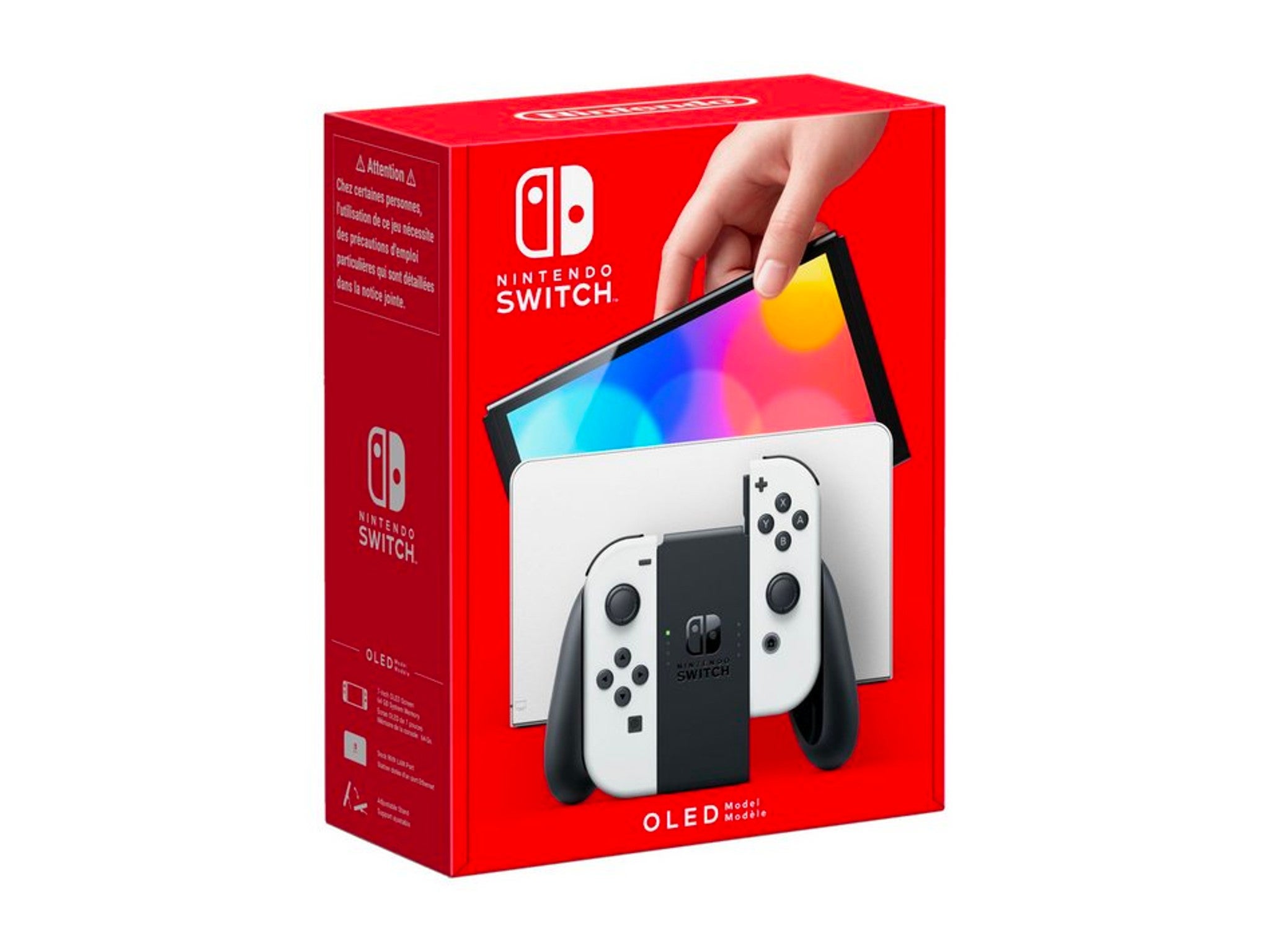
- Best: Gaming handheld
- Dimensions: 4in x 9.5in x 0.55in
- Display: 7in multi-touch capacitive OLED touch screen (1280x720)
- Storage: 64GB, micro SD
- Video output: Up to 1,080p in TV mode; up to 720p in handheld and tabletop mode
- Battery life: 4.5 to 9 hours
- Why we love it
- Bright, sharp display
- Improved battery life
- Seamlessly switch between handheld and TV gaming
- Take note
- Less powerful than PS5 and Xbox Series
The Nintendo Switch OLED improves upon the original Nintendo Switch in every possible way. It features a larger 7in OLED screen, so you’ll notice that colours are more vivid, and blacks are darker when playing games in handheld mode. There’s a sturdier kickstand so it won’t fall over when you breathe on it, the speakers are slightly better and there’s now an ethernet port for more reliable online play.
If you’re looking for a new console, the Nintendo Switch OLED is it. It plays all the best Nintendo Switch games, so you’ll have the entire Mario, Pokémon and Zelda catalogue to power through.
The verdict: ‘The Legend of Zelda: Tears of the Kingdom’
Though it could never hope to have the same impact as the original, Tears of the Kingdom manages to improve on Breath of the Wild by dropping the player back into a sprawling open-world sandbox and handing them even more tools and creative freedom to explore it.
At times, the game seems like a half-sequel, an enormous extension of the original game that’s undoubtedly linked to the past, but it’s also more than just that. This heavily remixed version of Hyrule offers hundreds of more hours of adventuring, made to feel original and fresh by novel ways to interact with this rich and compelling world.
Want to know what other games are coming out this year? Read our guide to upcoming PS5 games
Voucher Codes







